How to Identify Common Wheat Weeds
Frequent weed scouting helps you choose the best treatment program.

Weed infestations in wheat crops can cause severe reductions in yield by damaging plants, out-competing for resources, or interfering with harvest. It’s important to scout frequently and correctly identify threatening weeds to pick the right treatment program. Keep an eye out for these common weeds by learning their key identifying characteristics.
Kochia
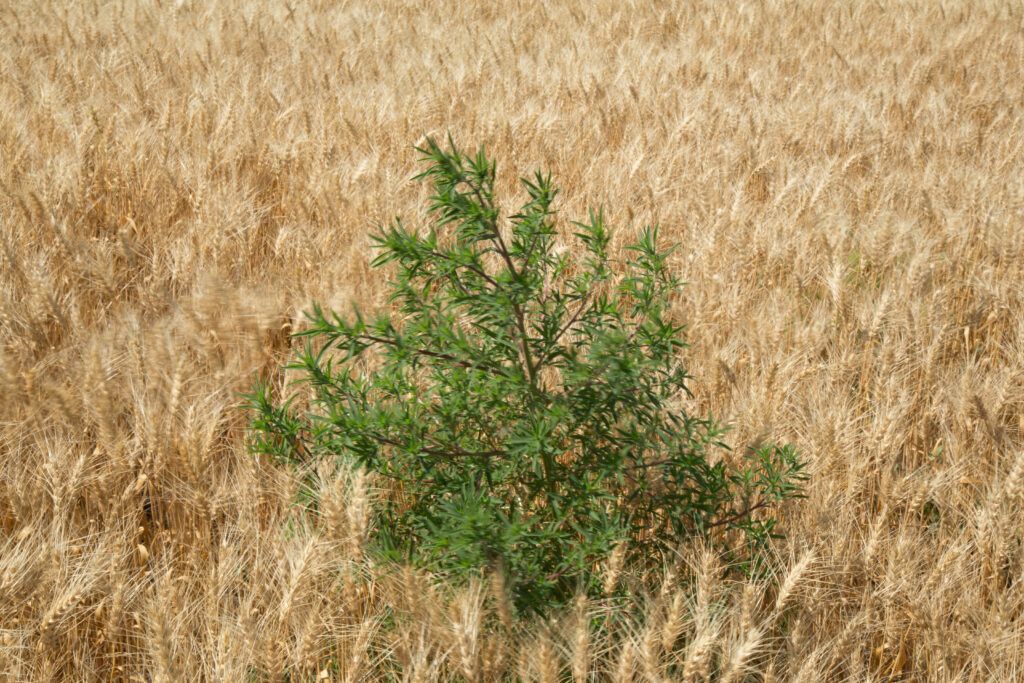
Kochia is a summer annual in the goosefoot family. Here’s how to identify it:
- Kochia matures to 1 to 6 feet tall.
- Cotyledons are stalkless, elliptical and softly hairy with dull green upper surfaces. They may be pink on the underside.
- Seedling stems are hairy and green to reddish in color.
- Their stems grow upright and are branched with hairs on the upper parts. They may be tinged red.
- Look for alternately arranged leaves with a narrow lance shape and smooth, hairy edges.
- Leaves are typically 1 to 2 inches long and may have silky hairs on the underside.
- Small green flowers grow in clusters in the upper leaf axils and on terminal spikes.
Russian Thistle
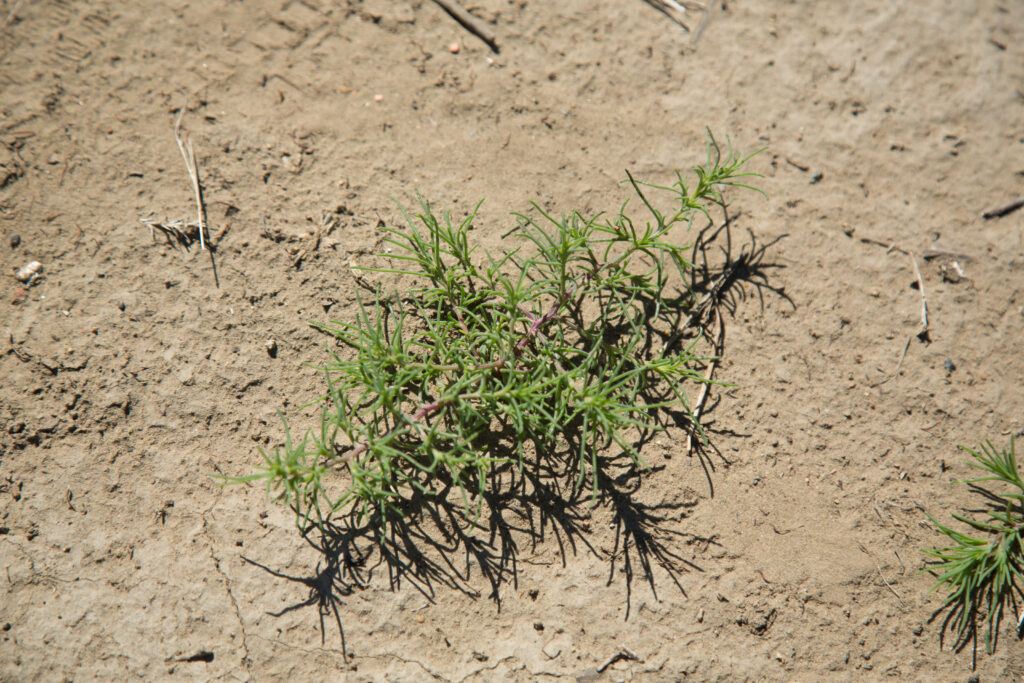
Russian thistle is a summer annual in the goosefoot family, but their hairless leaves distinguish them from kochia. Here are other key features to look for:
- Russian thistle is 6 inches to 4 feet tall at maturity.
- Seedling stems are striped with reddish-purple streaks. Their first true leaves appear opposite and are fleshy and needle-like.
- Their stems are profusely branched with short, stiff hairs and reddish-purple streaks. They become stiff and dry later in the season.
- Leaves grow alternately and are hairless, thin and linear or needle-shaped with a stiff, prickly spine at the tip.
- Flowers develop in the leaf axils on the upper portions of the stem and have five pale green to red, petal-like, membranous sepals that surround the developing seed.
Wild Oat
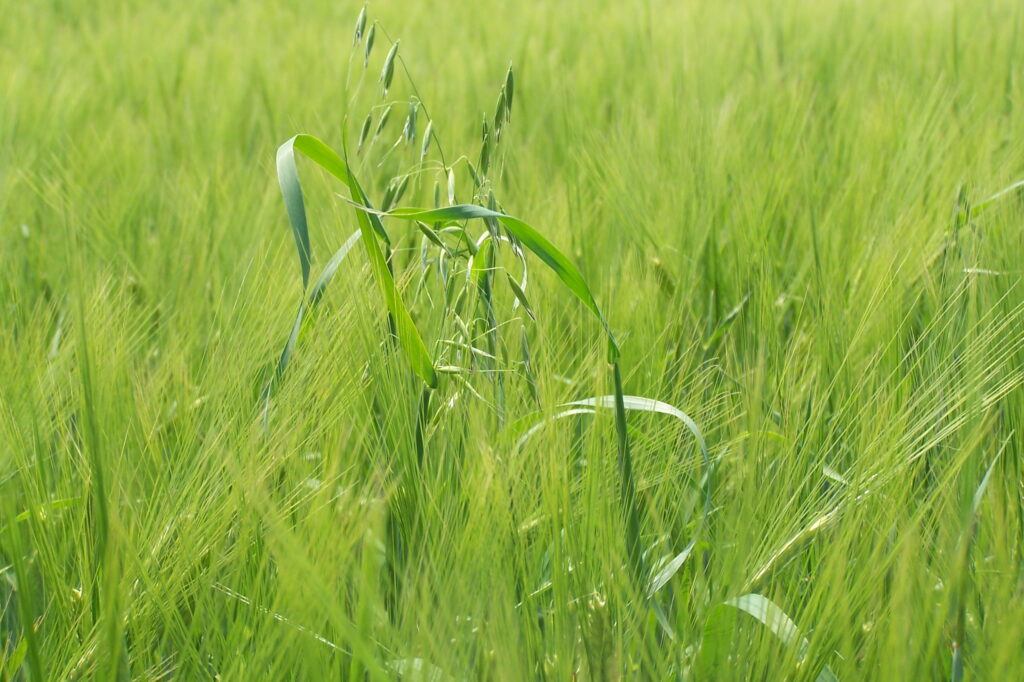
Wild oat is a summer annual in the grass family. It poses a unique threat as grains from wild oat can mix with wheat grains, causing price penalties in harvested crops. Look for these characteristics to distinguish this grass:
- Wild oat can grow up to 4 feet tall.
- Seedlings have hairy leaves and the seed clings to the seedling for a long time.
- Stems are round and hairless.
- Leaves are flat, rolled in the bud and often twisted counterclockwise. They can be up to 8 inches in length and usually have a few short hairs at the base of the blade.
- Their flower heads are open and branched, and spikelets hang like pendants from flowering branches. They typically bloom from March to June.
Foxtail
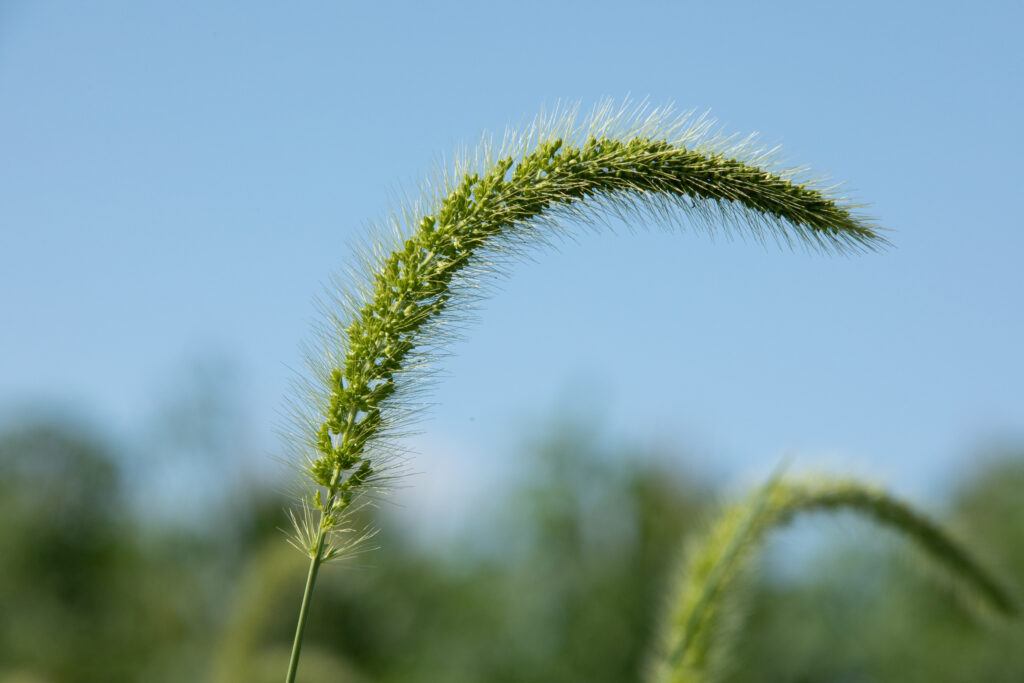
Foxtail is a summer annual in the grass family. These come in yellow, green and giant varieties and their flowers are their most distinguishing feature. Keep an eye out for these other features:
- Foxtails are 1 to 3 feet tall at maturity.
- Their seedlings’ first leaves are usually parallel to the ground and rolled in the bud.
- Stems branch and grow erect or bent at the base, but ascend upwards overall.
- Their leaves are 4 to 15 inches in length with a spiral twist.
- Flower heads are spikelike, bristly and densely packed with flowers.
Wild Radish
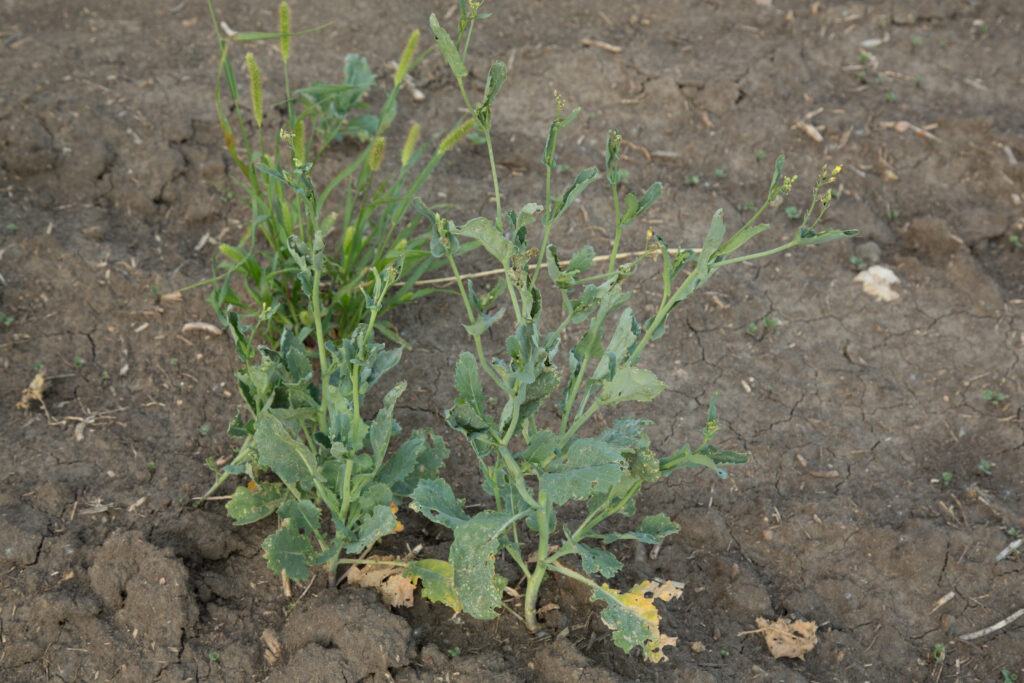
Wild radish is a winter or summer annual in the mustard family. The following features distinguish it from other weeds:
- Wild radish reaches a mature height of 1 to 4 feet.
- Seedlings are purple with stiff hairs below their cotyledons. Seedling leaf blades are hairless and kidney to heart shaped with an indent.
- Stems are densely hairy at the base and branched.
- Leaf edges are irregularly toothed and lobed. They grow alternately, with stiff hairs on the top, bottom and edges.
- Branched clusters of flowers grow at the ends of stems and branches. They have four petals each and are pale yellow to cream white with purple veins.
Common Ragweed
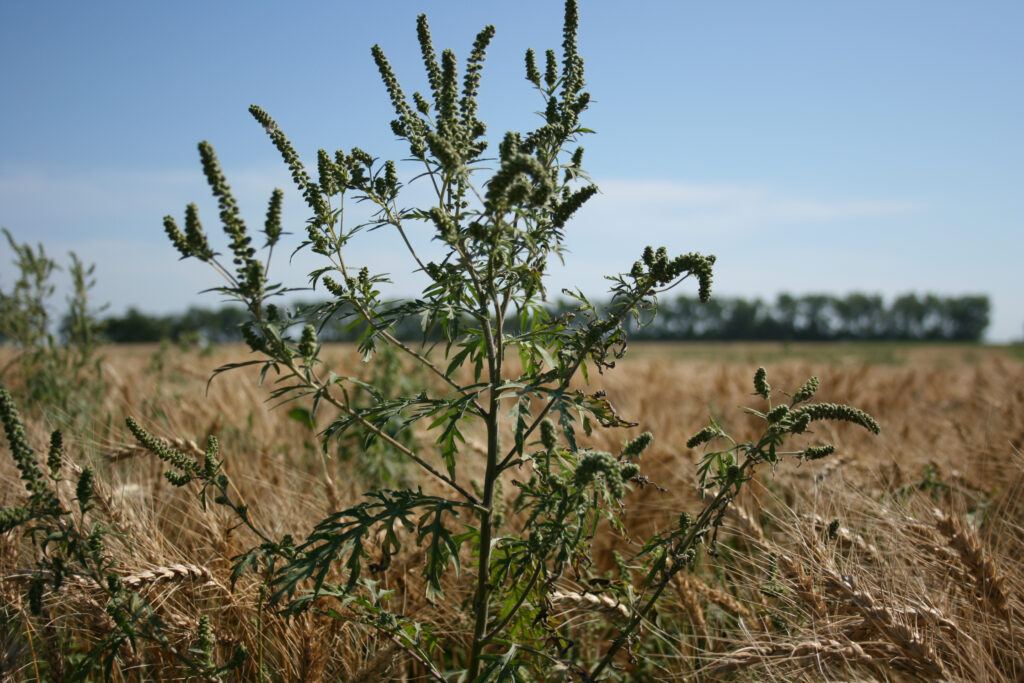
Another summer annual weed to look for is common ragweed, which is in the aster family. Here are some features to look for:
- Common ragweed reaches 1 to 3 feet in height.
- Seedling stems are purple. Cotyledons are dark green and paddle shaped; young leaves are green and deeply divided into lobes.
- Stems are branched and densely covered with rough hairs.
- Leaves grow to 2 to 4 inches in length and are fern-like with longer stalks on lower parts of the plants.
- Green flowers are arranged in clusters of male and female flowers.
For more information about wheat weeds, reach out to your Syngenta representative.
4 Min Read
- Weed infestations impact yield potential by competing with wheat for resources and interfering with harvest.
- Scouting is the first line of defense against yield-robbing weeds.
- Identifying weeds helps growers identify the right treatment program.























